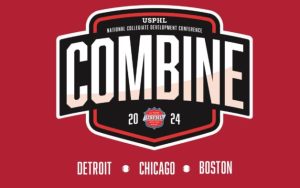AHU Coach’s Corner: We must work to ensure hockey growth, not hockey survival
Hockey survival.
That is what the sport does when individual organizations only aspire to have the best and majority of the players in any given geographical area. They may have some of the most dedicated and efficient leaders in the organization, as well as some of the best coaches. Their teams are always top notch or at the very least, competitive.
These are the organizations that don’t mind luring players away from other organizations because it’s ultimately about their own survival and success. It’s short-sighted and free-market and competitive. Top players sometimes like to practice, train and play with other top players, so they switch teams from season to season. Other top players like to be recognized as the top player, so they stay with or go to teams where they can have the spotlight.
Regardless of the situation, all of these things often times lead to stunted growth, or even a reduction in the overall numbers.
The different levels of hockey are starting to become watered down with the addition of so many junior hockey teams and Tier I youth teams. There are a lot more players playing at these levels that would develop more by playing at a level more appropriate for their current stage of proficiency. That means there are a lot of players playing Tier II youth hockey to fill the holes left by players moving up too early to Tier I, which makes it look more like bad scholastic hockey, where 1-3 players dominate the games for each team.
Overall, this is bad for the sport of hockey.
More people playing the game is great for the growth of the sport. Too many players playing at levels where they are not remotely competitive or prepared is not only a player safety issue, it’s a quality of play and development issue and ultimately, bad for the future of the game.
If hockey is to grow in mid-size markets, leaders and organizations need to begin to work together to establish what programs and rinks have Tier I, what programs have Tier II and which ones specialize in rec and house-level hockey. While areas around Chicago, Detroit, St. Louis, Boston and Philadelphia (to name a few) may have the talented numbers for multiple high-level programs, other areas do not. Those other areas have too many programs trying to establish themselves at the higher levels, despite the talented player supply not meeting the demand for the higher levels.
That’s when the players jumping from organization to organization begins, and the animosity is created. It becomes an ‘every man for himself’ situation, which almost always ends in mutual destruction.
The other side of the equation is Tier I programs that are adding birth-year and Tier II teams to their organization to help spread out the costs of the more expensive programs. While fiscally that makes sense, it does not usually bode well for the growth of the sport and the competitive balance or level of play.
Most of the time, these issues are created by motives such as power, money and ego. It’s the dark side of free enterprise and loose regulations. The more good people who are involved in the sport for the right reasons, the better the sport will ultimately become.
While you cannot hold everyone’s hand and have them run things the same way, you can work towards common goals as a hockey community and share the benefits as well as the responsibilities.
Mike Bowman is the head coach and general manager of the Phoenix Knights Tier II junior team in the Western States Hockey League.








